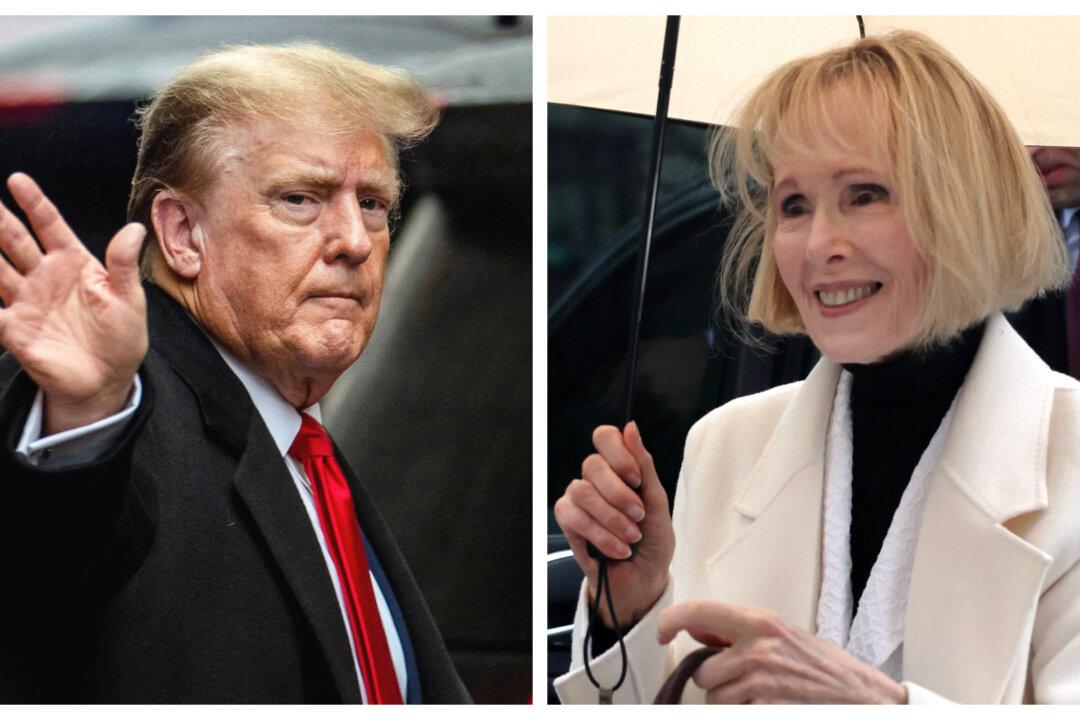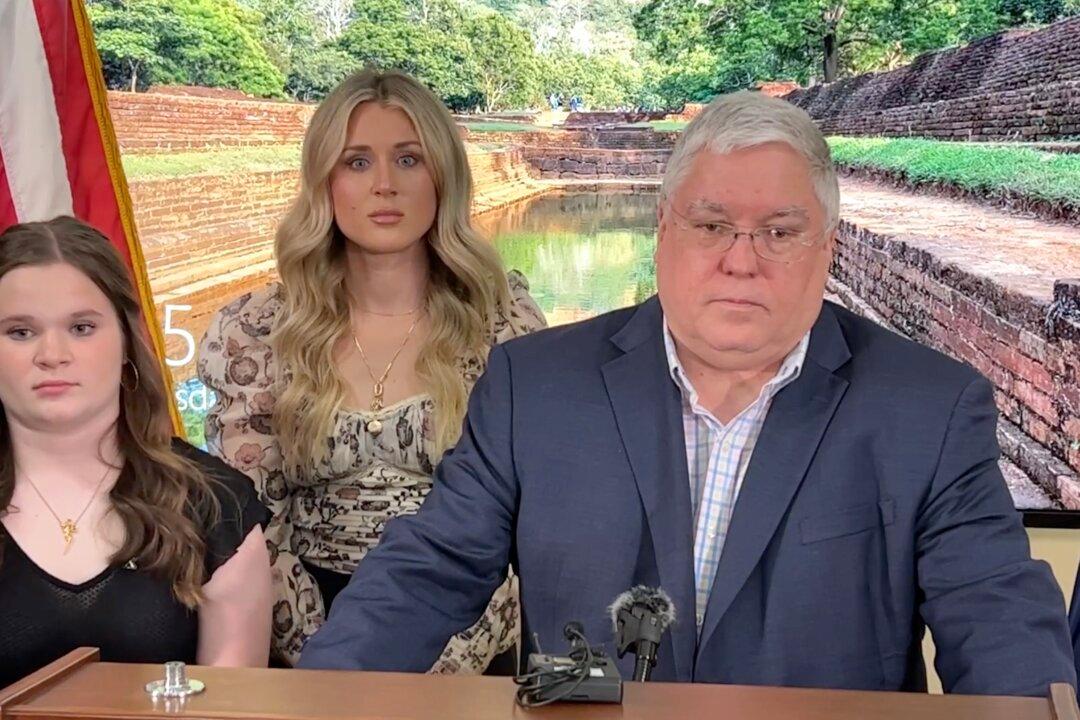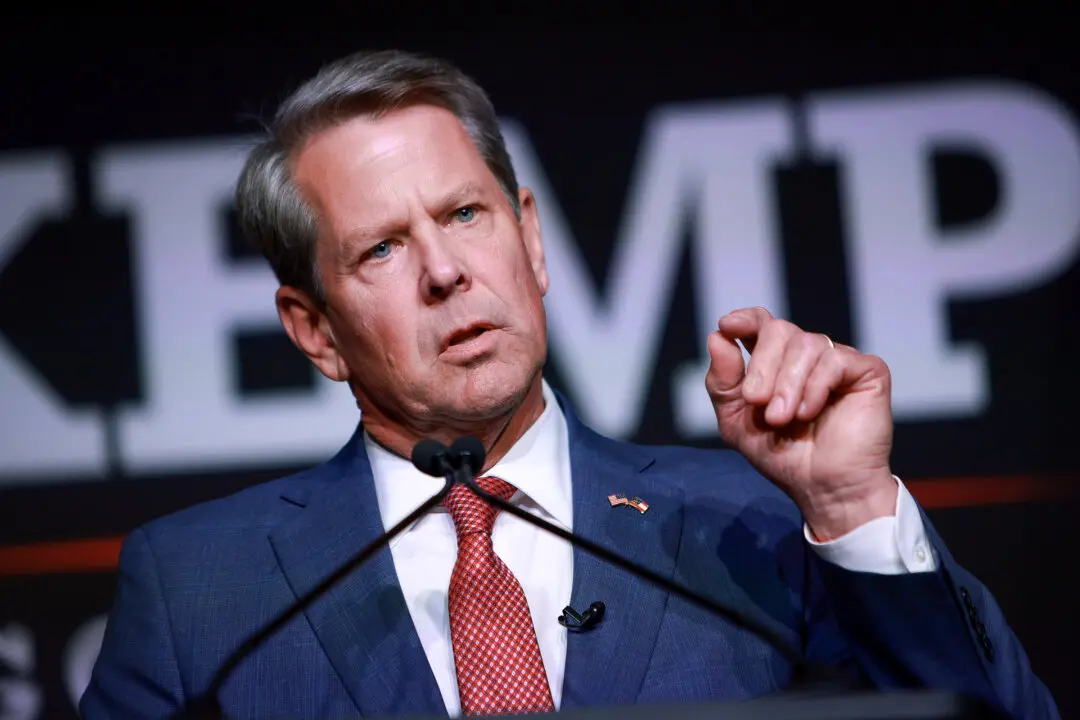Italian media say three more bodies have been found in rubble of the Genoa bridge collapse, raising the death toll to 41.
Genoa’s prefect’s office said it didn’t immediately have official confirmation of the reports by ANSA news agency and other Italian news media Saturday that the bodies were found by rescuers overnight.
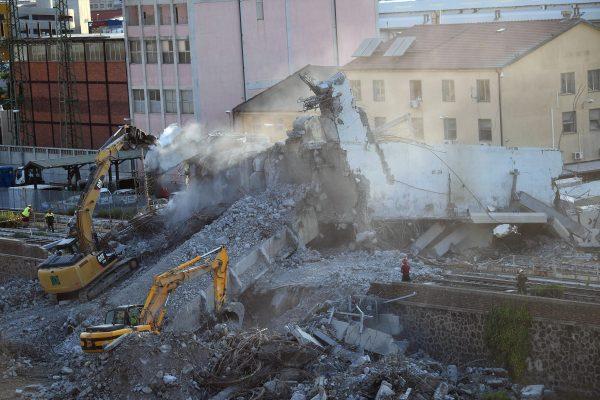
ANSA said the bodies were found inside a car smashed under a huge block of concrete from the collapse on Tuesday, Aug. 14.
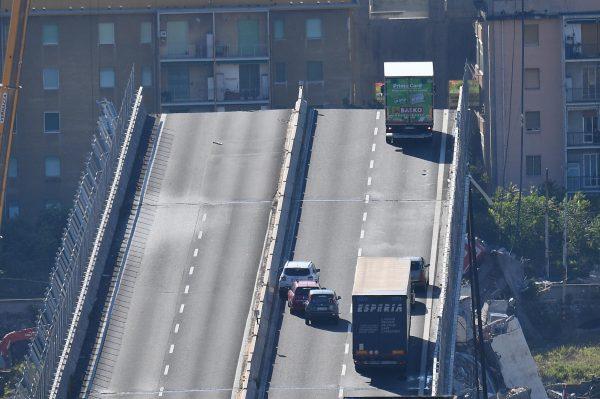
‘Triangle of Survival’
Firefighters lifting away the rubble on Friday said they had not given up hope of finding someone alive three days after the collapse.Rescuer Stefano Zanut said there was a “triangle of survival” where rubble or beams form a protective cover.
“We are working in synchronization with earth-moving equipment and sniffer dogs,” Zanut told Reuters at the site.
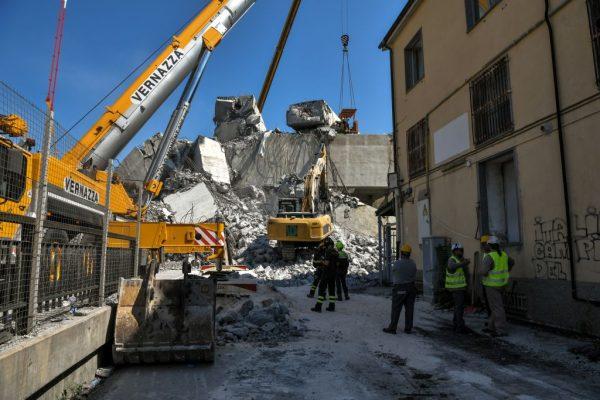
“We are trying to find points where we can penetrate this incredibly heavy rubble. Then the earth-moving equipment moves in to create an opening from where the dogs enter,” said Zanut, one of some 340 firefighters working shifts at the scene since Tuesday.
Victims Laid to Rest
Relatives and friends gathered on Friday for the emotional funeral of four friends who died in the bridge collapse in Genoa.The Basilica of Santa Croce in the southern town of Torre del Greco was packed as hundreds of people arrived to pay their respects.
Hundreds of people packed into the square outside.
Some accused the state of inadequate oversight and regulation of the bridge operator.
“My son didn’t die he was killed because the state did not look after its citizens. It’s not just my son that is dead, 40 people are dead and they are still digging,” said Roberto Battiloro, father of Giovanni Battiloro, a young man killed in the collapse.
In Genoa on Saturday, relatives and mourners gathered next to the coffins of the victims ahead of a state funeral.
Displays of white roses lay on the top of the 19 coffins which stood in rows in a convention hall at the Exhibition and Trade Centre in the northern port city.
A small white coffin carrying a child stood out amongst the others.
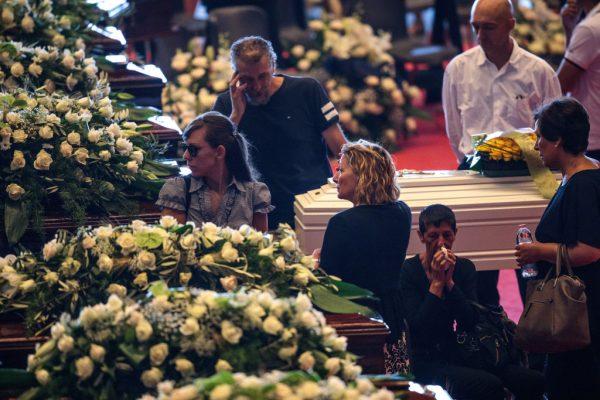
Many of the victims’ families have boycotted the event and held their own private services for their dead, as a sign of protest that what they say was a tragedy that should never have happened.
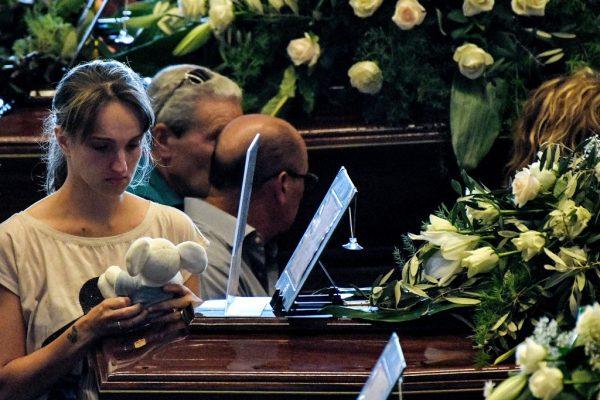
Savona mayor, Ilaria Caprioglio, said Italy must look at the security of its infrastructure and a tragedy such as this should never be allowed to happen again.
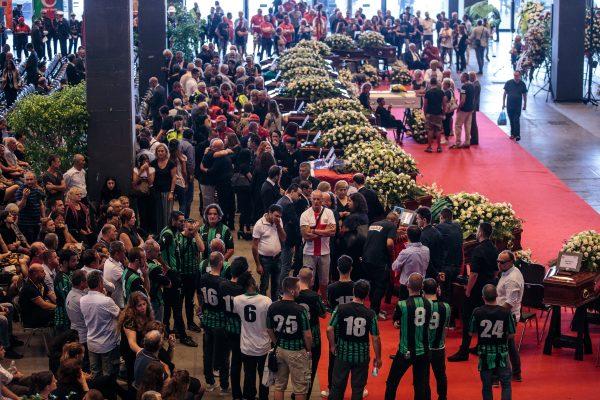
Crumbled ‘Like Papier-Mâché’
The 51-year-old bridge, part of a toll motorway linking the port city of Genoa with southern France, collapsed during torrential rain on Tuesday, sending dozens of vehicles crashing onto a riverbed, a railway, and two warehouses.“People are in shock.”
Footage of the collapse, with cries from an onlooker—“Oh God! Oh God!”—showed a flash of light as the bridge crumbled out of view.
Rescuers have worked around the clock since the vast span gave way, combing through the debris for survivors.
“We’re not giving up hope, we’ve already saved a dozen people from under the rubble,” a fire official, Emanuele Giffi, told AFP. “We’re going to work round the clock until the last victim is secured.”
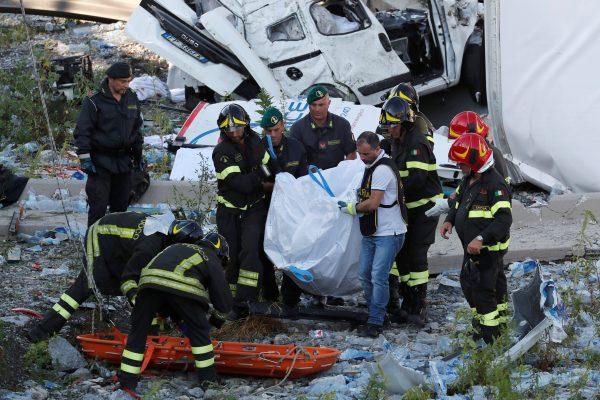
Eyewitness Ivan, 37, evacuated from a nearby building, described the collapse as unbelievable.
‘Imposing the Highest Penalties Possible’
Furious government ministers lashed out at the bridge operator, saying it should pay for the disaster and lose its concession.Interior Minister Matteo Salvini said the private company that operated the bridge had earned “billions” from tolls but “did not spend the money they were supposed to.”
“Imposing the highest penalties possible and making sure that those responsible for the dead and the injured pay up for any damages and crimes is the very least,” Salvini said.
Italy’s deputy prime minister, Luigi Di Maio, said in a Facebook post on Aug. 15, “Those responsible for the tragedy in Genoa have a name and a surname, and they’re called Autostrade per l’Italia.”
“For years it’s been said that private management would be better than that of the state,” Di Maio said. “And so today, we have one of the biggest dealers in Europe telling us that the bridge was safe and there was no worry of it collapsing. Autostrade had to maintain it but didn’t.”
Autostrade, a unit of Milan-listed Atlantia group, said it had done regular, sophisticated checks on the structure before the disaster, relying on “companies and institutions, which are world leaders in testing and inspections” and that these had provided reassuring results.
“These outcomes have formed the basis for maintenance work approved by the Transport Ministry in accordance with the law and the terms of the concession agreement,” it said.
Danilo Toninelli, the infrastructures and transport minister, said on Wednesday the collapse was “unacceptable” and that if negligence was a factor “whoever made a mistake must pay.”
Autostrade’s Genoa area director, Stefano Marigliani, called the collapse “unexpected and unpredictable.”
“The bridge was constantly monitored and supervised well beyond what the law required,” he said. “There was no reason to consider the bridge dangerous.”
Autostrade was about to launch a 20 million euro ($23 million) bidding process for major safety improvements to the bridge.
The tender would have covered strengthening of the bridge’s pier cables, including those of pier nine, the one that collapsed on Tuesday.
Italian prosecutors have launched a criminal investigation into the cause of the disaster.
‘A Tragedy Waiting to Happen’
The aging bridge, designed by the renowned Italian engineer Riccardo Morandi, was fraught with “structural doubts.”In its design, Morandi used a patented prestressed reinforced concrete technology, which later proved problematic.
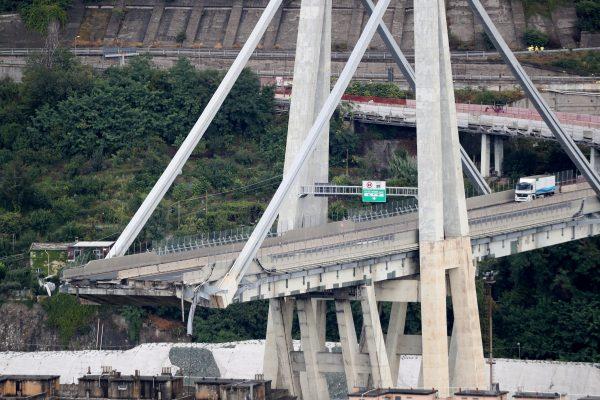
Antonio Brencich, a professor of reinforced concrete construction at the University of Genoa, told Radio Capitale that Morandi’s technology “was affected by extremely serious corrosion problems” and was over time shown “to be a failure.”
“I would say that most probably something went wrong with the foundation or supporting ground rather than with the pier, the deck, or the cables,” he said.
In the wake of the disaster, Giuseppe Conte, the prime minister, said that “all infrastructure” across the country needed to be double-checked. “We must not allow another tragedy like this to happen again.”
Toninelli echoed these concerns, saying that many structures in Italy suffer from insufficient safety checks.
“There has not been sufficient maintenance and checks, and safety work for many bridges and viaducts and bridges in Italy constructed - almost all - during the 1960s,” he said.
Italian civil engineering association CNR reportedly said structures as old as the collapsed Morandi bridge had exceeded their lifespan.
Tens of thousands of bridges and viaducts built in the 1950s and 1960s should be repaired or replaced.


